Small-School MCBB Teams You Need to Watch At Least Once Before the NCAA Tournament
Small-School MCBB Teams You Need to Watch At Least Once Before the NCAA Tournament
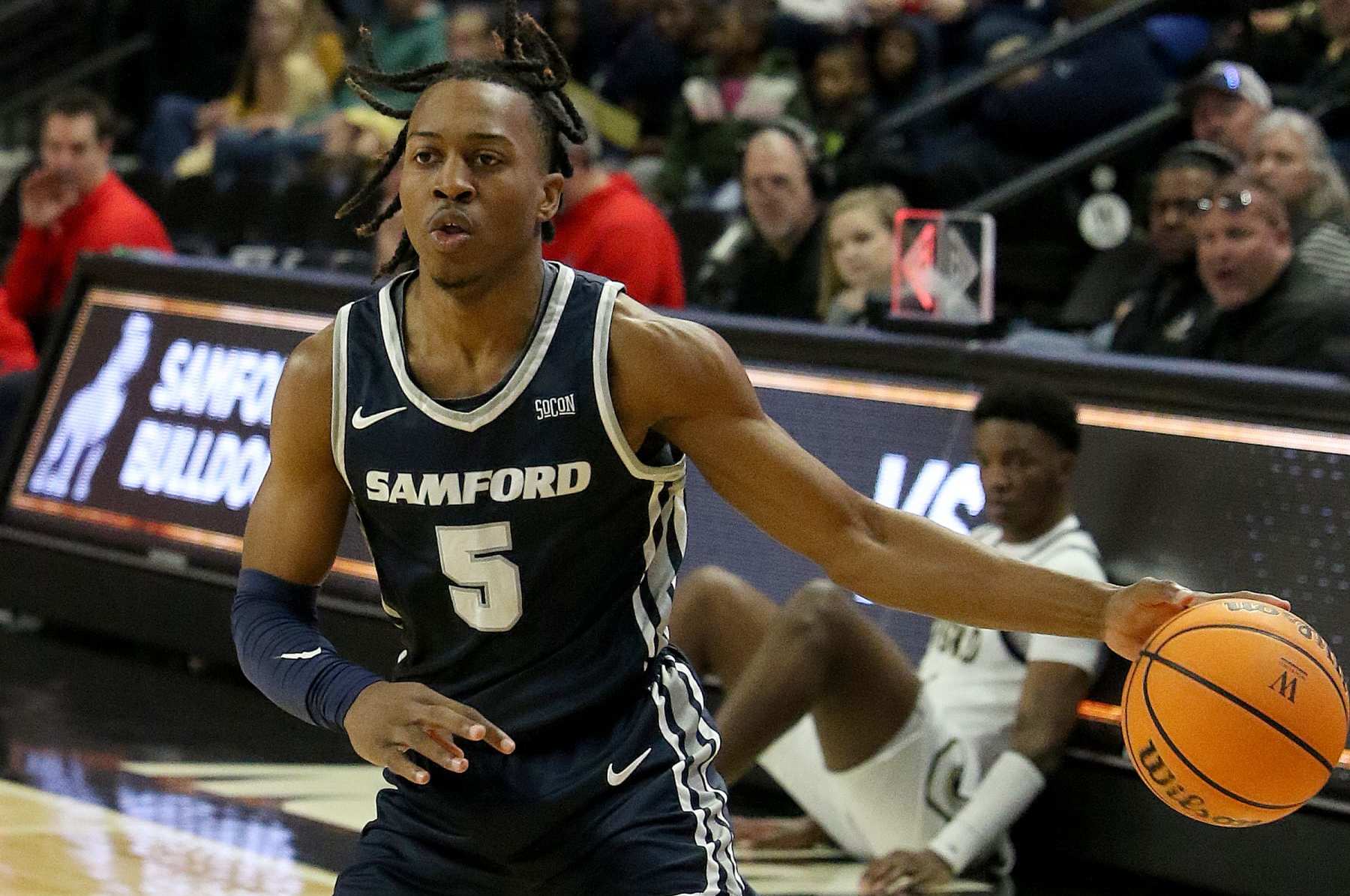
Soon enough, we will have the official bracket for the 2024 men's NCAA tournament.
Shortly after we get that bracket, a few schools are going to come out of seemingly nowhere with sledgehammers to break the heck out of it.
And if you want to win your totally not-for-profit bracket pools, identifying those teams who could make Cinderella history is the way to do it.
To that end, we've tabbed eight teams from outside this year's top seven conferences who could be extremely dangerous double-digit seeds and who you are definitely going to want to watch at least once before you fill out a bracket.
Granted, we are almost exclusively talking about teams that will need to win their conference tournaments in order to make it into the big dance, so we may well lose half this group before Selection Sunday arrives.
But when one of these teams makes it to the Sweet 16, don't say we didn't warn you.
Indiana State Sycamores
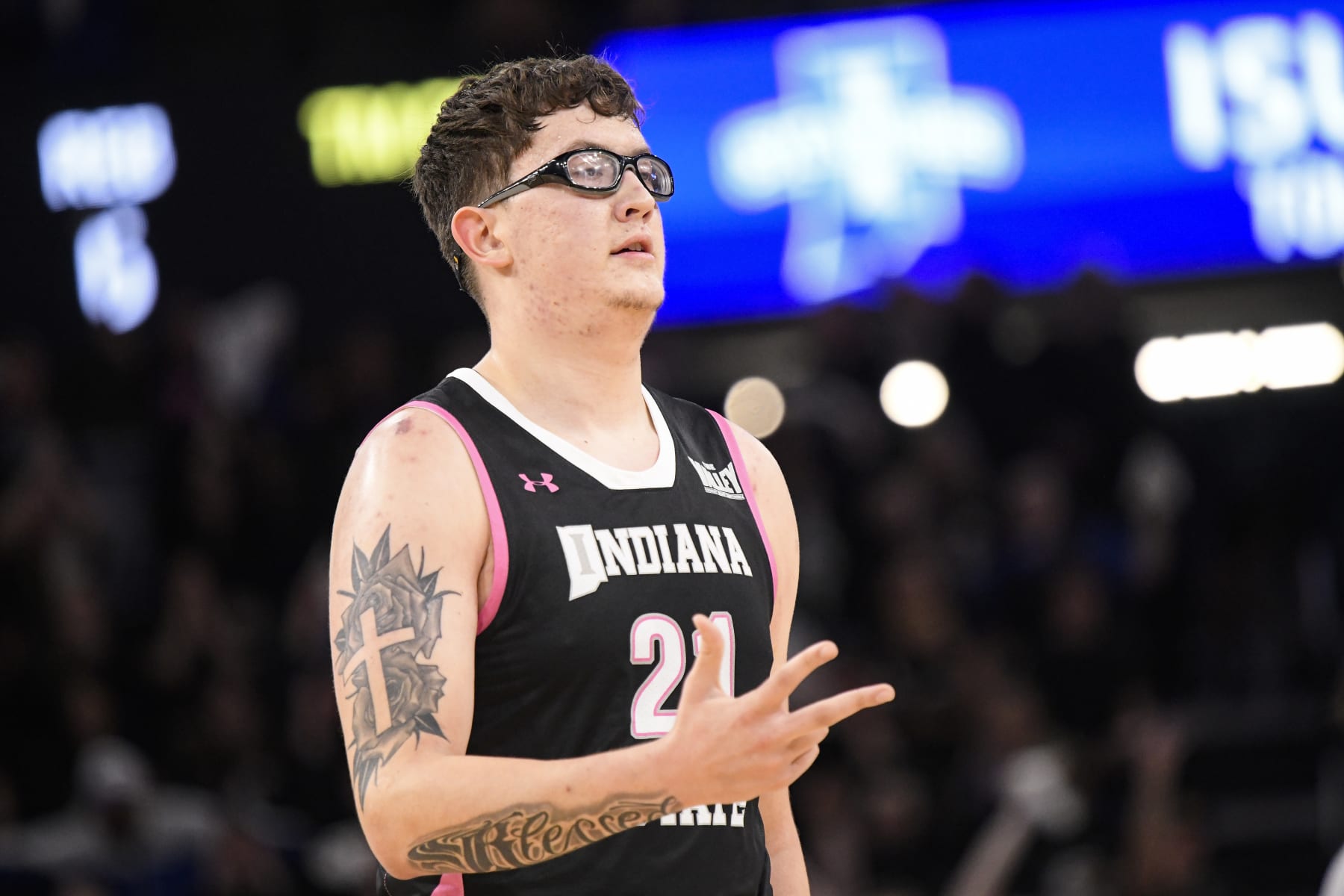
Indiana State hit an unfortunate rough patch last week, suffering losses to both Illinois State and Southern Illinois in the process of dropping to the wrong side of the bubble.
But if the Sycamores can win the Missouri Valley Conference tournament or otherwise sneak into the at-large field by the thinnest of margins, get ready to watch a double-digit seed that can shoot the lights out.
At 59.4 percent, Indiana State leads the nation in effective field-goal percentage. The Sycamores shoot 62 percent from inside the arc but take slightly more than half their shots from three-point range where they convert at a 38 percent clip. This is also one of the best free-throw shooting teams in the nation, which doesn't even factor into the sky-high eFG%.
By no means are we suggesting this team is as dangerous as the Villanova team that ran through the 2018 NCAA tournament like a freight train, but the Sycamores are at least equally lethal when it comes to shooting the rock. That 'Nova team finished the tournament with a 59.5 eFG% for the year, shooting 40 percent from distance while taking close to half its shots from beyond the arc.
Robbie Avila is the bespectacled star of the show, averaging 16.6 points, 7.4 rebounds and 3.8 assists per game. However, it's Isaiah Swope and Ryan Conwell who really key that perimeter attack, combining to make more than six triples per game, each shooting around 38 percent.
Akron Zips
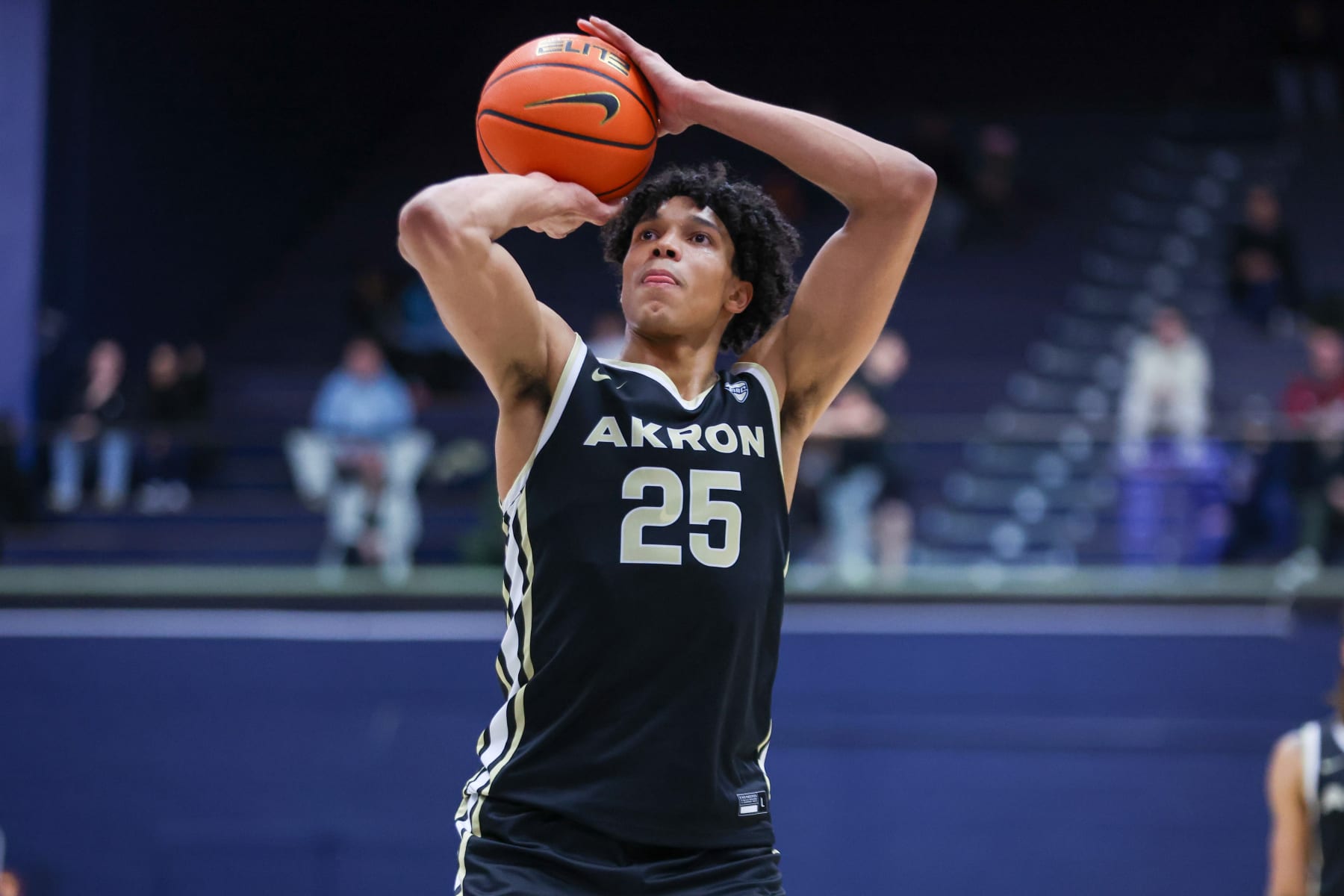
It's hard to believe Akron has never won an NCAA tournament game, because the Zips have been a mainstay as a mid-major to monitor for a solid two decades at this point.
They almost pulled off a 13-over-4 upset of UCLA two years ago but unfortunately ran out of gas down the stretch.
Now that their dynamic duo of Enrique Freeman and Ali Ali is two years older and wiser, though, perhaps it's time to finally end that drought.
Freeman is averaging 18 points and 13 rebounds per game, leading the nation in the latter department. He has recorded a double-double in 19 of his last 20 games, and merely went for 23 points, eight rebounds, five blocks and three steals in a road win over Kent State in the exception to that rule.
And after a rough 2022-23 season at Butler, Ali returned to Akron better than ever. His three-point stroke (31 percent) hasn't been great, but he is doing a much better job of scoring inside the arc and getting to the free-throw line than he did two years ago, averaging better than 15 points per game.
Guard play tends to reign supreme in the NCAA tournament, but Akron could flip the script with its 6'7"/6'8" big men.
Akron doesn't have any marquee wins this season, but it is a dangerous team all the same.
South Florida Bulls
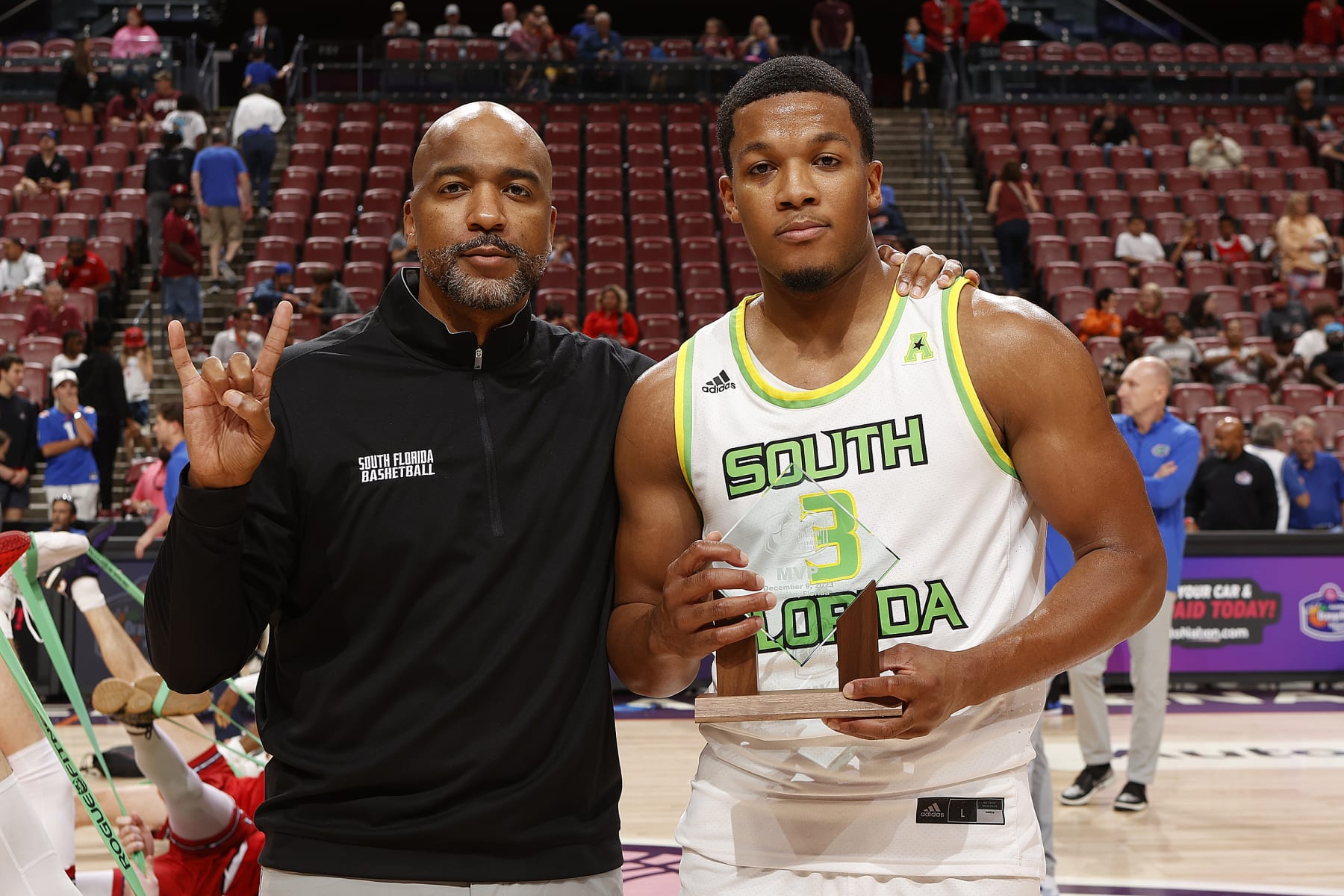
It was a tough call on whether South Florida qualifies as a "small school." The Bulls were in the Big East barely a decade ago, and they still play in a semi-major conference.
But was literally anyone talking about South Florida prior to Sunday's win over Florida Atlantic?
Can you actually name anyone on the Bulls roster, even though that win was their 17th out of 18 games to keep them alone in first place of the AAC?
Maybe they aren't as "small school" as the rest of the list, but this is a likely double-digit seed from outside the power six that deserves more national attention than it has gotten.
South Florida got out to a brutal start to the season. Not only did the Bulls go 2-4, but they also suffered terrible home losses to Central Michigan and Maine, all but eliminating themselves from the at-large conversation less than four weeks into the regular season. But they were breaking in a different system under a new head coach, while introducing five transfers and a freshman into their primary eight-man rotation.
Growing pains were to be expected. And after shooting 24.2 percent from three-point range during that 2-4 start, the Bulls shot 40.6 percent and averaged 10.0 makes over the course of their next 18 games.
Amir Abdur-Rahim brought Chris Youngblood and Brandon Stroud with him from Kennesaw State, and Youngblood has been the leading scorer and one of the biggest pieces of that perimeter attack, along with former Kansas State transfer Selton Miguel and freshman Jayden Reid.
That Kennesaw State team almost pulled off a massive first-round upset in last year's dance, but maybe USF can do it.
McNeese State Cowboys
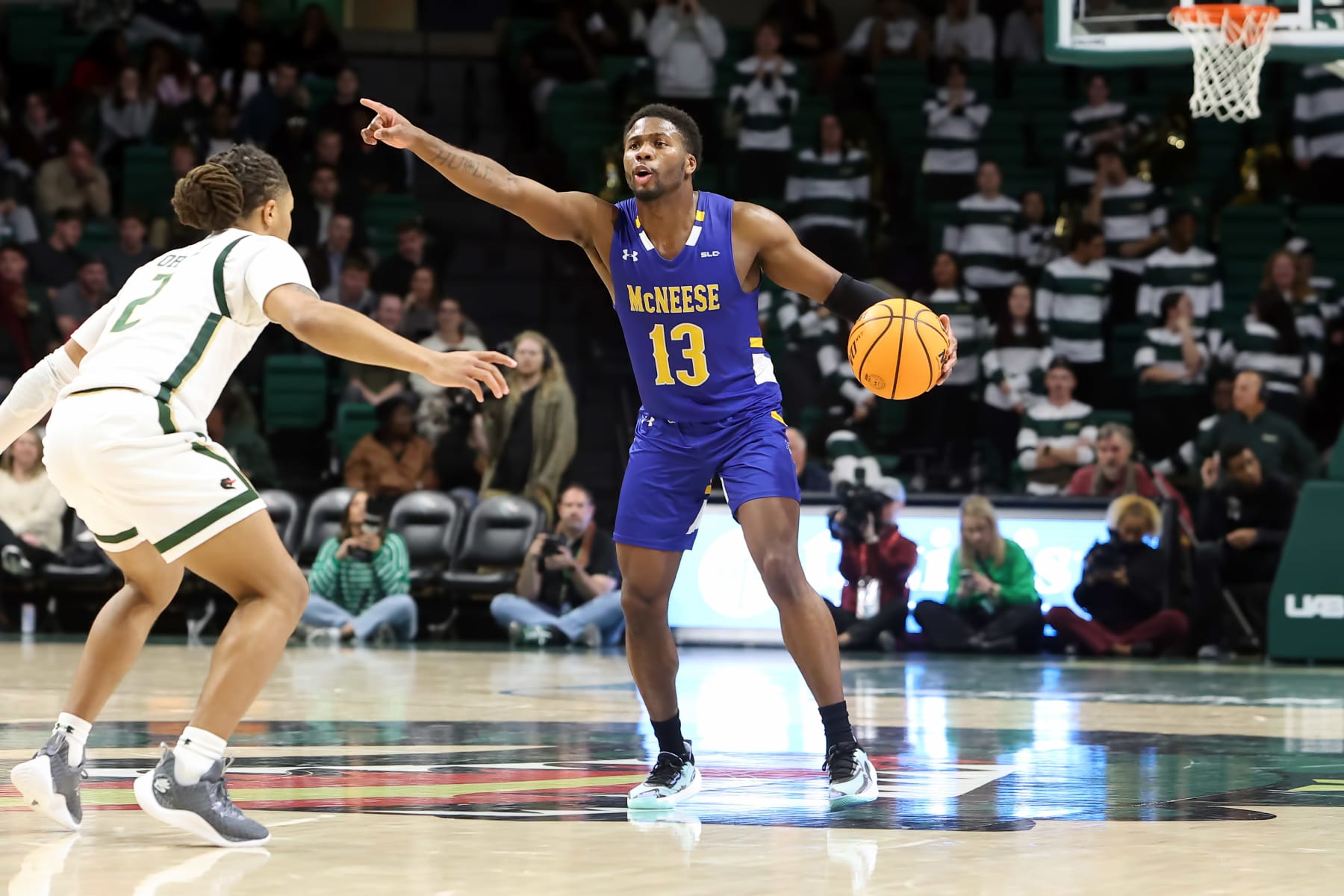
The Southland Conference typically ranks among the worst in the nation, as it has been 27th (out of 32) or worse on KenPom for 11 consecutive years. Yet, this league is no stranger to NCAA tournament upsets. Abilene Christian stunned No. 3 seed Texas in 2021, and Stephen F. Austin pulled off first-round upsets in both 2014 and 2016. (Those teams are now in the WAC, but those were feathers in the Southland's cap.)
One thing all three of those teams had in common was the ability to force a ton of turnovers, which is also true of this year's McNeese State Cowboys, presently fifth in the nation in steal percentage.
Will Wade's guys are much more than just ball-hawking pests, though. McNeese State is also an excellent three-point shooting team, and a team that avoids committing turnovers almost as well as it forces them, with a year-to-date turnover margin that will probably be north of plus-200 by Selection Sunday.
McNeese State opened the season with an 11-point road win over VCU. It later beat a respectable UAB team by 21 and handed Michigan one of its many disappointing losses on the year.
Long story short, this team is exactly what we look for in a Cinderella candidate: lots of steals, at least one three-point sniper (the Cowboys have four), several legitimate nonconference tests, veteran leadership and a point guard who can take over a game with either assists or buckets (Shahada Wells).
Sadly, their case for an at-large bid is not great, even with those three solid road wins. But the Cowboys absolutely should win with the Southland Conference tournament and would be a very dangerous No. 12 seed.
In our latest projection of the field, McNeese State had a projected first-round matchup with No. 5 seed Wisconsin in what would be maybe the most obvious pick for a 12-over-5 upset in tournament history.
Samford Bulldogs
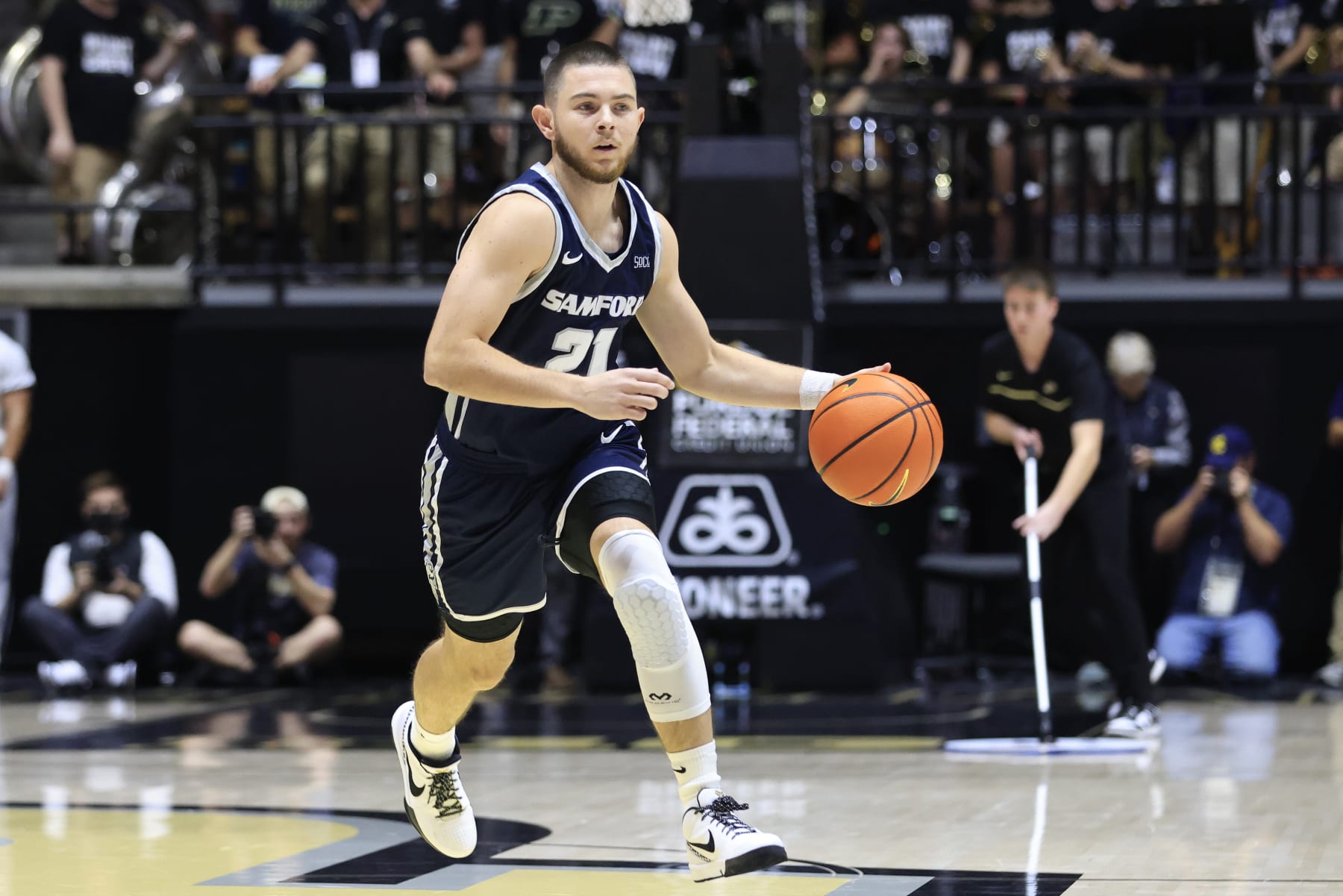
If you like McNeese State to pull off at least one upset, you might want to take a gander at Samford, as well.
Like the Cowboys, the Bulldogs have compiled a minimal-loss record behind the strength of a three-point assault on offense and a turnover-forcing machine on defense.
One key difference between the two, though, is pace of play, with Samford basically doing hockey-style line changes while playing at one of the fastest tempos in the country. Ten Bulldogs average at least 10 minutes per game, with only veteran point guard Rylan Jones north of 22 minutes on average.
Samford's Johni Broome-like do-it-all star is Achor Achor. On a per-40-minutes basis, Achor is averaging 28.4 points, 10.9 rebounds, 3.2 blocks and 2.8 assists, shooting 62.3 percent inside the arc and 46.0 percent beyond it. He is one of just 10 players who has logged at least 500 minutes this season with a PER north of 30—a list which includes Broome, DaRon Holmes II and, of course, Zach Edey.
It does bear mentioning that Samford was mercilessly obliterated by Purdue (98-45) in its lone opportunity for a marquee win. And four days after McNeese State scored its road win over VCU, Samford lost to the Rams by 10. But they have won 23 of their last 25 games and will be a tough out if they run into a No. 4/5 seed with any issues along the perimeter.
Appalachian State Mountaineers
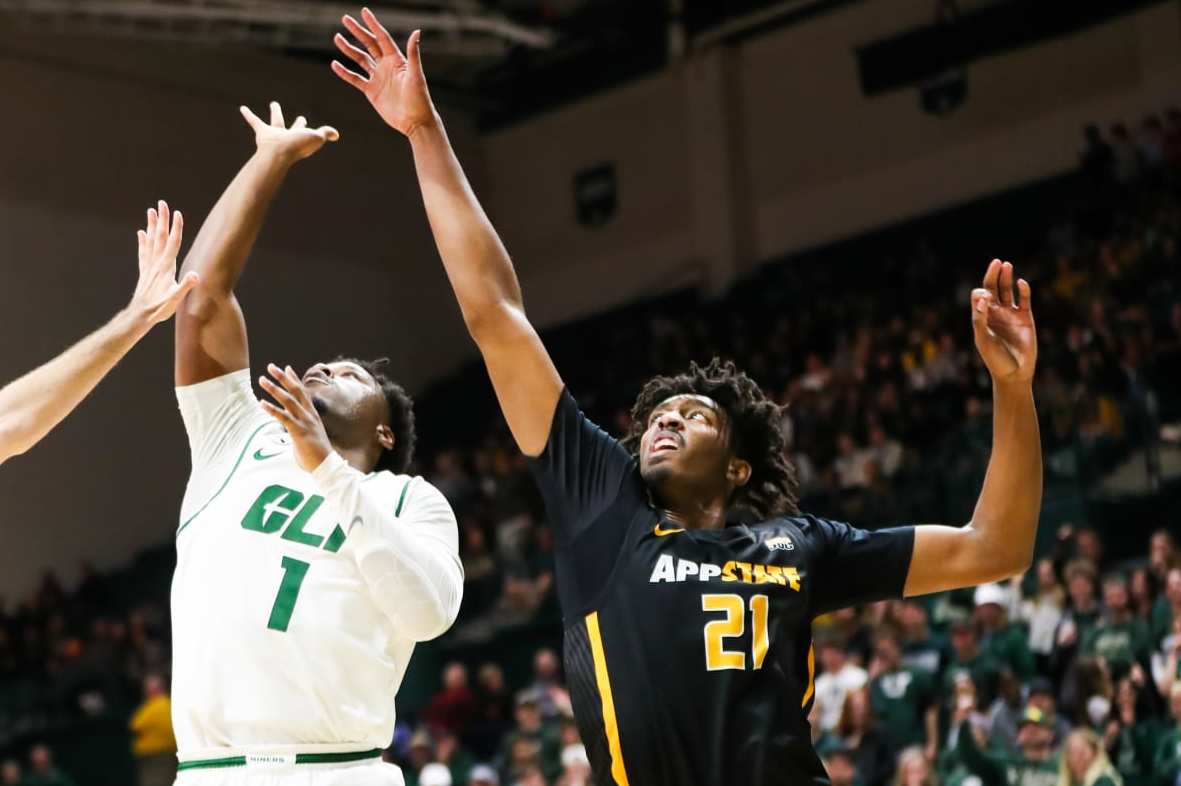
Let's pivot from back-to-back teams that prey on turnovers to one that does an incredible job of erasing shots at the rim.
Led by Justin Abson, Appalachian State leads the nation with 7.1 blocks per game.
But what's even more impressive than the sheer volume of blocked shots is the Mountaineers do it without fouling.
As of Tuesday morning, the national average of fouls committed per shot blocked was 4.89. Aside from App State, the best such ratio in the nation was Western Illinois at 2.52.
The Mountaineers are at 1.82, which is preposterous.
After looking through more than a decade's worth of season stats, it's clear that a fouls-to-blocks ratio of 2.0 or below is extremely rare. The only other team to finish below 2.09 was Western Kentucky two years ago at 1.91, with Jamarion Sharp averaging 4.6 blocks per game.
To find the most recent instance of a team finishing below 1.9, you have to go back to 2011-12 Kentucky, when Anthony Davis blocked 186 shots while the Wildcats ended up with an incredible 1.72 ratio en route to 38-2 and winning the national championship.
Also impressive on that front is that App State's marquee win over Auburn came on a rare night when that fouls-to-blocks ratio was not in their favor. Abson lasted only 11 minutes in that game before fouling out. The Mountaineers had a season-low two blocked shots but still pulled off the upset.
And with Abson, there's no good reason to worry that might happen again. That was the only time in his two seasons with App State that he fouled out of a game, and one of only four times that he has been whistled for four fouls. He should be able to remain on the floor and make a big impact for a quality team that also swept James Madison this season.
High Point Panthers
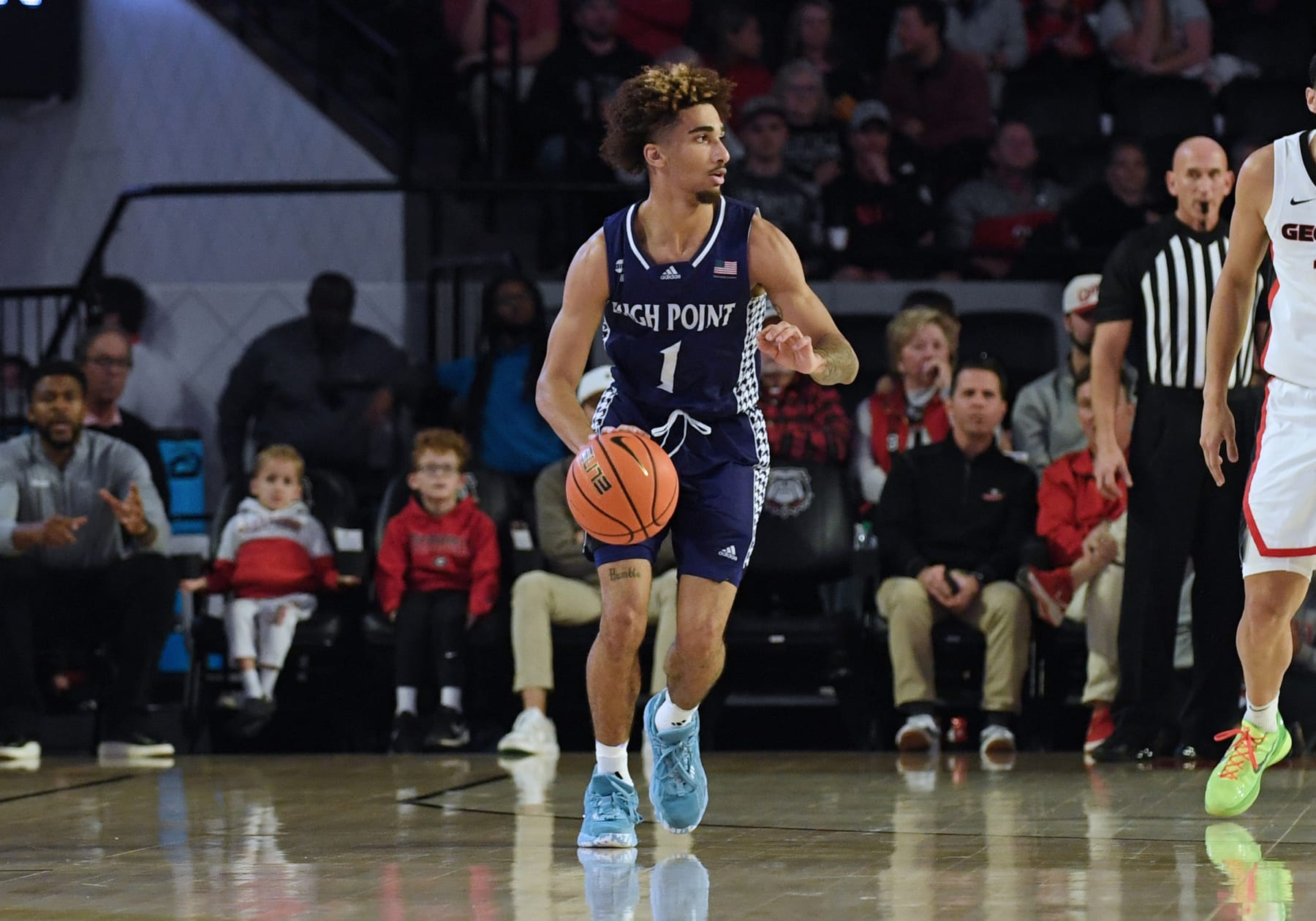
When you're looking for a team that could pull off a monumental first-round upset, ideally you're looking for a team that can actually play anything resembling defense.
High Point...doesn't fit that bill.
The Panthers rank in the bottom 100 in the nation in adjusted defensive efficiency and have allowed at least 79 points on 10 occasions. They do a great job of limiting second-chance opportunities, but it'd be swell if they actually played defense against the first chances instead of just being in a good position if the shots miss.
However, remember the Oral Roberts team that shocked the world by reaching the Sweet 16 in 2021?
That team entered the NCAA tournament ranked even worse in adjusted defensive efficiency (285th) than High Point is (277th).
And like that ORU team from three years ago, this High Point team can score relentlessly.
The Panthers don't have anything close to a Max Abmas in their midst. It's a more well-rounded assault with four players (Duke Miles, Kimani Hamilton, Kezza Giffa and Abdoulaye Thiam) averaging better than 12 points per game, plus a 7'0" freshman (Juslin Bodo Bodo) who is a rebounding machine on both ends of the floor and a solid shot-blocker.
What High Point does better than anyone is get to the charity stripe. The Panthers have made more free throws, attempted more free throws and drawn more fouls than any team in the country.
We're talking 22 fouls drawn per game, which could make them a nightmare matchup for a team with a short rotation—like Kansas, Creighton or North Carolina.
And they very well may draw the Tar Heels in the first round thanks to the geographical nature of bracketing principles. It's really just a question of whether the Panthers will land on the proper seed line to be matched up with UNC in Charlotte. Facing Tennessee in Charlotte wouldn't be bad, either, as the Vols rarely play more than eight guys and do commit more than their fair share of fouls.
Grand Canyon Antelopes
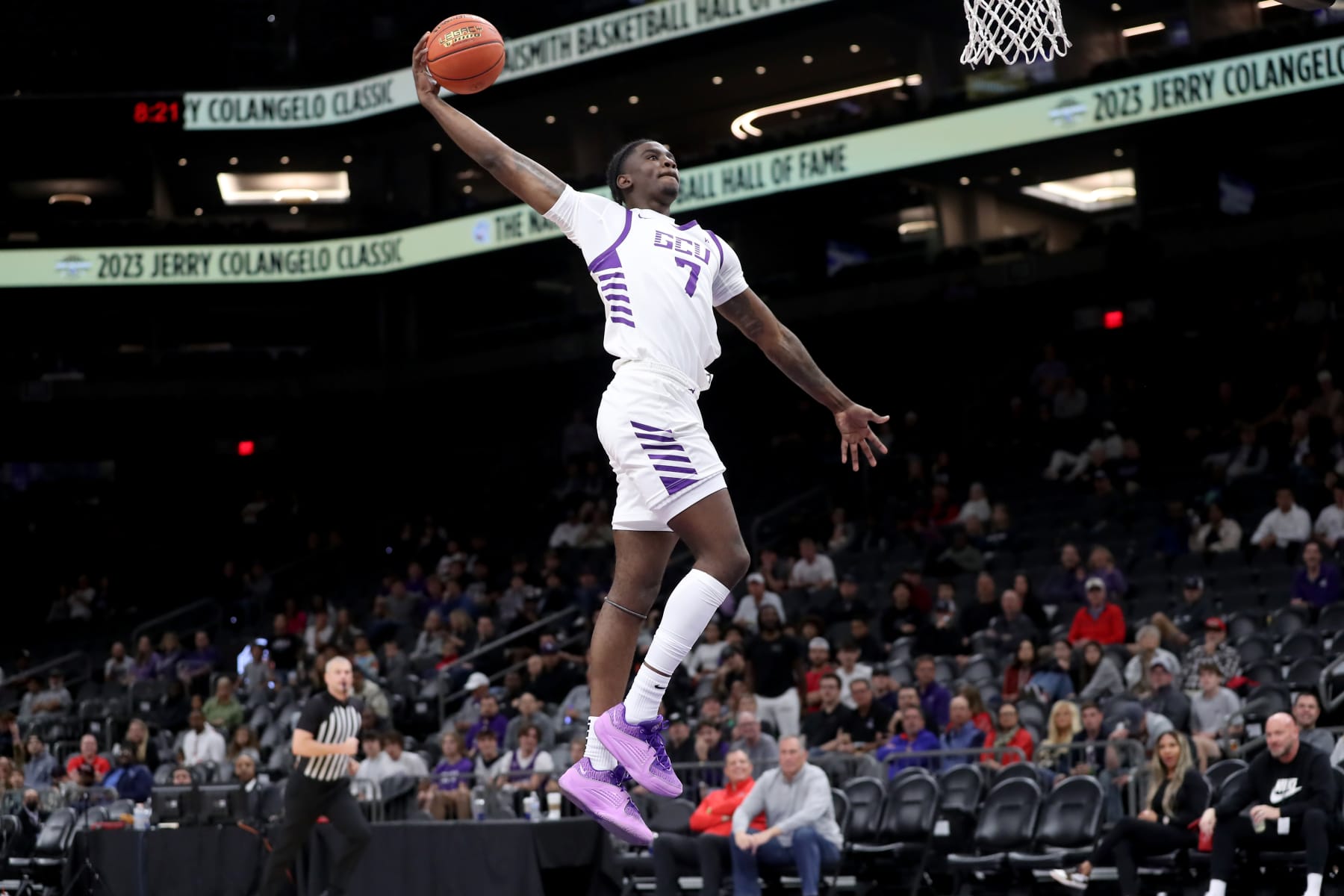
Following Connecticut's loss at the hands of Creighton on Tuesday night, there is now just one team left in the country that has suffered fewer than three losses.
That's right.
It's the Antelopes of Grand Canyon.
Now, by no means is GCU on the same tier of greatness as the reigning national champions. But you also don't go 24-2 with wins over San Diego State, San Francisco, Louisiana Tech and Liberty by accident.
Unlike a lot of the teams on this list, there's nothing in particular the 'Lopes do at an elite level. They're not top-20 in anything on KenPom with the exception of free-throw rate on offense.
But they do rank top-100 in a whole bunch of categories and are just generally a damn good team with no glaring weaknesses.
Slowly but surely, Jovan Blacksher Jr. is playing more and better in his return from a torn ACL. And if he can get back to maybe 70 percent of what he used to be two to three years ago, an already terrific trio of Tyon Grant-Foster, Gabe McGlothan and Ray Harrison could turn into a quality quartet.
For what it's worth, Grand Canyon was the team I singled out in the preseason as my pick to become this year's Cinderella story, and even I'm a bit shocked that we're talkin' 'bout the 'Lopes as a possible at-large team. But if they manage to win out, they could be headed for a single-digit seed and would not be a welcome sight for any No. 1 seed on Selection Sunday.
Advanced statistics via KenPom.com and Sports Reference unless otherwise noted and are current through the start of play Wednesday.
